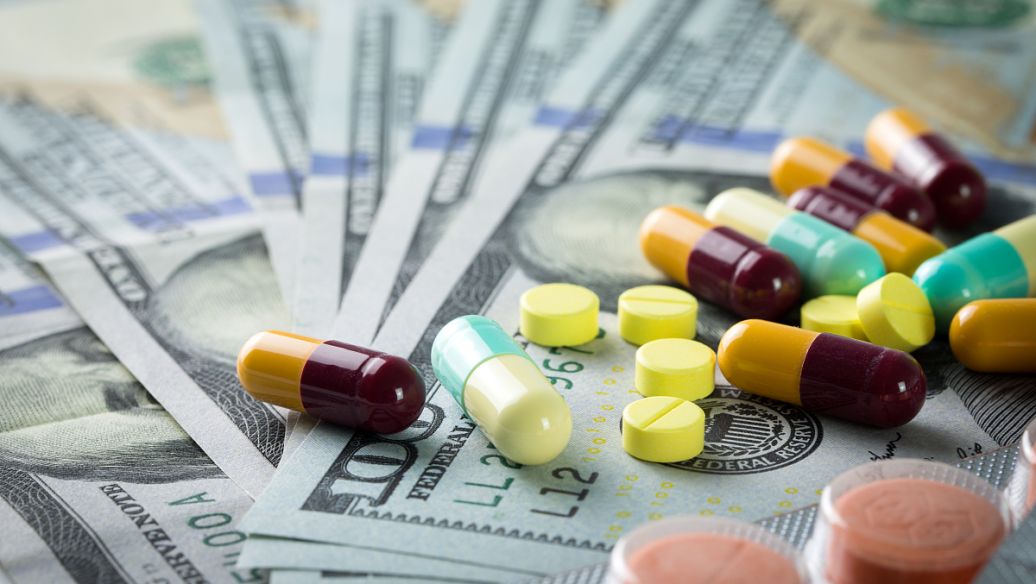扫一扫 添加小助手
服务热线
13818320332
扫一扫 关注我们
 近日,WHO发布清洁验证指南草案修订稿,名为:在清洁验证中,使用基于健康的暴露限(HBEL)时应考虑的要点。
近日,WHO发布清洁验证指南草案修订稿,名为:在清洁验证中,使用基于健康的暴露限(HBEL)时应考虑的要点。
该指南初稿于今年5月发布,之后基于收集到的反馈意见形成了本版本。WHO表示,将在9月21日前再次收集反馈意见,之后的修订稿将在今年10月份召开的第55届WHO 药物制剂专家委员会(ECSPP)会议上进行报告。

本指南主要涵盖了:
在清洁验证中,基于药理和毒理学数据的HBEL时应考虑的要点,即如何基于风险和科学的方法。
就审查多产品设施中和清洁验证的当前状态和方法时,需要考虑的要点。
该指南正文分为五个部分,分别是:(1)介绍和背景、(2)范围、(3)术语、(4)传统方法和(5)新方法。
PharmLink指南组将对全文主要内容进行翻译和连载,供大家参考。
本次的内容是(5)新方法的上半部分。
5.New approaches 新方法(上)
Historical cleaning validation approaches often merely showed that using a defined cleaning procedure achieved an objective of meeting historical limits. In many instances, no development work or cleanability studies were done nor was consideration given to toxicological data for establishing limits for cleaning residues.
传统上,清洁验证方法通常仅表明使用定义的清洁程序,可以达到满足传统限度的目的。在许多情况下,没有进行开发工作或清洁能力研究,也没有考虑毒理学数据,来确定清洁残留物的极限。
Manufacturers should ensure that their cleaning procedures are appropriately developed and that their cleaning validation provides scientific evidence that residues of identified products that can be manufactured in shared facilities are removed to safe levels, providing a high margin of safety to patients. Control measures should be implemented to mitigate the risks of contamination and cross- contamination.
生产商应确保正确制定其清洁程序,并进行清洁验证,以提供科学证据,针对在共享设施中生产的特定产品,证明其残留被清除到安全水平,为患者提供了很高的安全系数。应采取控制措施,以减轻污染和交叉污染的风险。
This approach should include at least the following points (which are further described in the text below):
该方法至少应包括以下几点(下文将进一步描述):
• risk assessment to identify hazards, analyse risks, and to identify risk controls;
•风险评估,以识别危害、分析风险,并确定风险控制措施;
• cleaning procedure development studies including cleanability studies, where applicable (e.g. new products or cleaning procedures);
•清洁程序开发研究,包括清洁能力研究(如适用)(例如新产品或清洁程序);
• determination of technical and organizational controls;
确定技术和管理控制;
• HBELs setting;
HBEL设置;
• selection of appropriate analytical procedures; and
选择适当的分析程序;
• cleaning process control strategy.
清洁工艺控制策略。
Manufacturers should describe and implement their policy and approaches, including the points mentioned above, in a document such as a master plan.
在诸如主计划之类的文件中,生产商应描述并实施其政策和方法,包括上述要点。
Genotoxic and carcinogenic substances, degradants and other contaminants should be identified and their risks evaluated. Appropriate action should be taken where required .
应当确定遗传毒性和致癌物质、降解物和其他污染物,并评估其风险。需要时,应采取适当的措施。
5.1 Documentation 文件化
Risk management principles, as described by WHO and other guidelines on quality risk management (10), should be applied to assist in identifying and assessing risks. The appropriate controls should be identified and implemented to mitigate contamination and cross-contamination.
应采用世卫组织和其他质量风险管理指南所述的风险管理原则,以帮助识别和评估风险。应确定并实施适当的控制措施,以减轻污染和交叉污染。
The policy and approaches in cleaning and cleaning validation require that good scientific practices should be applied (including the use of appropriate equipment and methods). This should be described in a cleaning validation master plan. Development studies, cleaning and cleaning validation should be performed in accordance with predefined, authorized standard operating procedures, protocols and reports, as appropriate. Records should be kept.
清洁和清洁验证的政策和方法要求应采用良好的科学实践,包括使用适当的设备和方法。这应该在清洁验证主计划中进行描述。应根据预定义和批准的标准操作程序、草案和报告,进行开发研究、清洁和清洁验证。记录应保存。
The design and layout of documents, and the reporting of data and information, should be in compliance with the principles of good documentation practices and should also meet data integrity requirements .
文档的设计规划、以及数据和信息的报告,应符合良好文档规范的原则,并且还应满足数据完整性要求。
5.2 Equipment 设备
Cleaning validation should cover direct product contact surfaces. Non-contact surfaces should be included in cleaning validation where these have been identified as areas of risk.
清洁验证应覆盖产品的直接接触表面。如果非接触表面已被确定为风险区域,则应将其包括在清洁验证中。
Authorized drawings of equipment should be current, accurate and available. Equipment surface area calculations should be documented and justified. The source data for these calculations should be available. The calculated values should be used in the calculations in cleaning validation.
设备的已批准图纸应是最新、准确且可用的。对于设备表面积的计算,应形成文件并证明其合理性。这些计算的源数据应该可用。计算值应用于清洁验证的计算中。
All equipment and components, including those that are difficult to clean (for example, sieves, screens, filters and bags (such as centrifuge bags) should be considered in cleaning validation and calculations. Where the need is identified, dedicated equipment and or components should be used.
所有设备和组件,包括那些难以清洁的设备和组件(例如,筛子、筛网、过滤器和袋子(例如离心袋)都应在清洁验证和计算中予以考虑。需要时,应使用专用设备和/或组件。
5.3 Cleaning agents 清洁剂
Cleaning agents (including solvents and detergents used in cleaning processes) should be selected with care. They should be appropriate for their intended use. The selection of the relevant cleaning agent should be scientifically justified.
应当谨慎选择清洁剂(包括清洁工艺中使用的溶剂和清洁剂)。它们应适合其预期用途。有关清洁剂的选择应有科学依据。
There should be proof of effectiveness and appropriateness of the selected cleaning agent.
应当有所选清洁剂的有效性和适当性的证明。
Other points to consider include the concentration in which these are used, their composition and removal of their residues to an acceptable level.
其他要考虑的因素包括这些物质的使用浓度,其组成以及将残留物清除至可接受水平。
When cleaning agents are used in cleaning processes, these should be included in cleaning process development studies and cleaning validation.
在清洁工艺中使用清洁剂时,应将其纳入清洁工艺开发研究和清洁验证中。
5.4 Sampling 取样
Historically, cleaning validation included different methods being applied to determine whether or not there was any residue remaining on surface areas after cleaning. The focus was mainly on product contact surface areas.
从传统上看,清洁验证包括:采用不同的方法来确定清洁后表面上是否残留任何残留物。重点主要放在产品接触表面积上。
A combination of at least two or three methods should normally be used. These include, for example, swab samples, rinse samples and visual inspection. Visual inspection should always be performed. Swab sampling is the preferred other method to be used. Rinse samples should be taken for areas which are inaccessible for swab sampling.
通常应至少结合使用两种或三种方法。这些包括例如棉签样品、冲洗样品和目检。目检应始终进行。相当于其他使用方法,棉签取样是首选的。应在无法进行棉签取样的区域,进行冲洗样品的取样。
Appropriate sampling procedures, swab material and sampling techniques should be selected and used to collect swab and rinse samples. The detail should be clearly described in procedures and protocols. The number of swabs, location of swabbing, swab area, rinse sample volume and the manner in which the samples are collected should be scientifically justified.
应选择适当的取样程序,棉签材料和取样技术,并将其用于收集棉签和冲洗样品。应在程序和草案中清楚地描述细节。对于棉签的数量、棉签的位置、棉签的面积、冲洗样品的量以及收集样品的方式,应在科学上合理。
Swab and rinse sample methods should be validated. Recovery studies for swab and rinse sampling should be performed.
棉签和冲洗样品方法应经过验证。应进行棉签和冲洗样品的回收率研究。
Where microbiological sampling is carried out, the microbiological method should also be validated.
在进行微生物取样的地方,微生物方法也应得到验证。
The manner in which collected samples are stored (if required) and prepared for analysis should be appropriate, described in detail and included in the cleaning validation.
已收集样品的存储方式(如果需要)和分析准备方式应该适当,详细描述并包括在清洁验证中。
5.5 Cleanability studies 清洁能力研究
Before a new cleaning procedure is validated and adopted for routine use, a cleanability study should be performed in order to determine the appropriateness of the procedure for removing for example product residue, cleaning agents and microorganisms. For cleaning procedures that have already been validated where the data show that the cleaning procedure is effective and consistent, or where risk assessment indicated that cleanability studies may not be required, this may be considered acceptable.
在确认新的清洁程序并将其用于日常使用之前,应进行清洁能力研究,以确定清除产品残留物、清洁剂和微生物等程序的适当性。对于已验证的清洁程序,如果数据表明清洁程序有效且一致,或者风险评估表明可能不需要清洁能力研究,则可以认为这是可以接受的。
5.6 Risk management 风险管理
Risk management should be implemented with a focus on the identification, evaluation, assessment and control of risks to mitigate the risk of contamination and cross-contamination.
实施风险管理时应侧重于风险的识别、评价、评估和控制,以减轻污染和交叉污染的风险。
These controls should include technical and organization controls in order to deliver a validated cleaning process.
这些控制措施应包括技术和管理控制措施,以提供经过验证的清洁工艺。
文章来源:PharmLink
本网站刊载的所有内容,包括文字、图片、音频、视频、软件等,如非标注为“原创”,则相关版权归原作者所有,如原作者不愿意在本网站刊登相关内容,请及时通知本站,我们将第一时间予以删除。